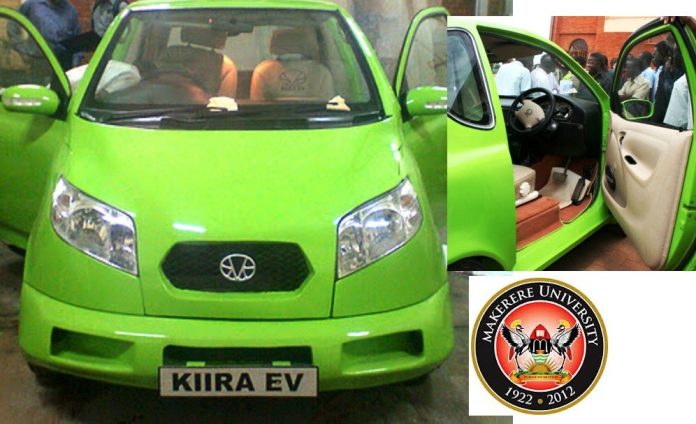(A column highlighting scientific, technological, engineering and design innovation in Africa)
The Kiira EV is Uganda’s first electric, environment friendly car created by students at Makerere University’s College of Engineering, Design, Art and Technology. The first of its kind produced in East and Central Africa, it took three years to build. The Kiira EV was named after the Nile River and runs on rechargeable lithium batteries instead of petrol.
The Kiira EV is a three-door, two-seater vehicle that was built at a cost US$35,000. The majority of its parts were built domestically, aside from the steering wheel, headlights, motor, and batteries. The battery system comprises 4 battery banks of 64 cells connected in series. The battery bank capacity of 40 AH (amp-hours) and 207 V is engineered to achieve an inter-charge distance 80 kilometers.
In 2011, the Kiira EV completed its first trial run of 4 km in Kampala, Uganda’s capital. It reached a top speed of 65 km/hour and successfully went up a 55-degree incline.
Sande Stevens Togboa, an electric engineer professor and deputy vice chancellor of Makere University, says the idea for the Kiira EV came about when Makere students participated in the Vehicle Design Summit, an international university initiative led by the Massachusetts Institute of Technology to build the car of the future. The summit led to the prototype Vision 200, built in 2008 in Turin, Italy.
Their successful participation in the summit inspired the students to build a car of their own in Uganda. “This vehicle is a manifestation of a changed paradigm of training in our institution to go beyond just lectures and laboratory experiments,” Togboa said.
In 2009, President Yoweri Museveni gave Makerere $10 million for research projects, which provided the funds to build the Kiira EV. The students now plan to build a 37-seater electric van and are already working on the design.













